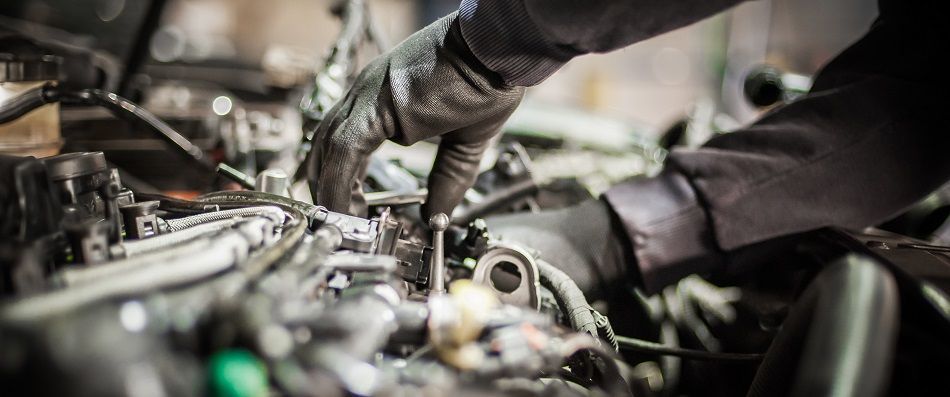Loading ...
Missing business hours data / Error occurred while getting the data.
Loading ...
Missing business hours data / Error occurred while getting the data.
Fuel And Ignition System In East Moline, IL

Fuel and Ignition System
How Does My Vehicle's Fuel System Work?
Your vehicle's fuel system works to provide fuel to your car's engine as needed to keep your vehicle running smoothly. The fuel system is made up of several parts, including the fuel tank, filter, pump, fuel lines, and the fuel injections or carburetor. Over time, buildup forms on these fuel system parts, which can cause the system to slow down. This is why it is so important to periodically bring your vehicle to Jim Whan’s Automotive Central in East Moline. We've been repairing cars since 2010 and are very familiar with all parts of your fuel system.
Your vehicle's fuel pump sends fuel from the gas tank to your car's engine. Some vehicles, including Mercedes-Benz, BMW, Toyota, and Honda, have multiple pumps and tanks to ensure you always have fuel when driving on different terrains, such as when taking a sharp turn or driving on a steep incline. The fuel pump also has fuel lines that send fuel from the tank to the engine, where it is combusted. To make sure the proper amount of fuel is distributed to the engine when needed, your vehicle has an electronically operated gate called “a fuel injector” that opens just long enough to meter the perfect amount of fuel to run the engine.
How Does Fuel Injection Work?
We at Jim Whan’s Automotive Central in East Moline are very familiar with how fuel injection works. In order for your vehicle's engine to run smoothly, it needs to be provided with the proper ratio of fuel to air. A fuel injector is an electronically controlled valve that supplies fuel from the fuel pump to the vehicle's engine. The fuel injector can open and close multiple times a second. When the injector is activated, an electromagnet moves a plunger that opens the valve, allowing pressurized fuel to squirt out through a tiny nozzle. The nozzle is designed to make the fuel as fine a mist as possible so that it can burn easily. The fuel injector is controlled by the vehicle's engine control unit or ECU.
How Does a Vehicle's Ignition System Work?
When your engine mixes air and fuel, it adds a spark to create an explosion. This spark is referred to as the ignition. The ignition system consists of an ignition coil, plug wires, and spark plugs. Here's a brief overview of what each of these parts does:
- The ignition coil takes your relatively low battery power and turns it into a spark powerful enough to ignite fuel vapor.
- The distributor rotates and distributes sparks to the appropriate spark plug at the right time. It does this through a spinning electrical contact called “the rotor.”
- The spark plug makes a nice, big, blue spark that ignites the fuel and air mixture and creates combustion.
Your vehicle's ignition system repeats this process thousands of times per minute as you drive. It is integral that each part of your fuel and ignition systems work smoothly. If you are experiencing any trouble with your vehicle, don't hesitate to bring it to Jim Whan’s Automotive Central in Rock Island.County today. In addition to fuel and ignition system repair, we also offer services in Auto Repair and Tire and Alignment Service.
Your Quality Shop for Fuel and Ignition System Repair
Transmission Fluid - Low transmission-fluid levels (potentially caused by a leak) will cause excessive wear of the internal components. If you have a manual transmission, plan to change out the transmission fluid every 30,000 to 60,000 miles. If you have an automatic transmission, change the fluid out every 30,000 to 100,000 miles, depending on the driving conditions you drive under.
Maintenance At 90,000 Miles
Here at Jim Whan’s Automotive Central in East Moline, IL 61244, we are experts in all things auto repair and can repair your cooling system efficiently and cost-effectively.
Reasons You Should Do Business With Us:
- Transparency
- Honesty
- Integrity
- We are Experts
- Years of Experience
We've been fixing cars since 2010, and our team prioritizes top-quality customer service above all else. Our mission is to exceed your expectations by earning your trust and providing the most reliable, honest, and courteous service available in the market today. If you are in East Moline, Quad Cities, Bettendorf, Colona, East Moline, or the surrounding areas, feel free to call us at (309) 752-0200 or go online to https://jimwhansautomotivecentral.com/ to schedule an appointment! Jim Whan’s Automotive Central - Quality Auto Repair at a Fair Price!.
Loading ...
Missing business hours data / Error occurred while getting the data.
Our Location
Having trouble finding us?
Loading ...
Missing nap lines data / Error occured while getting the data.
